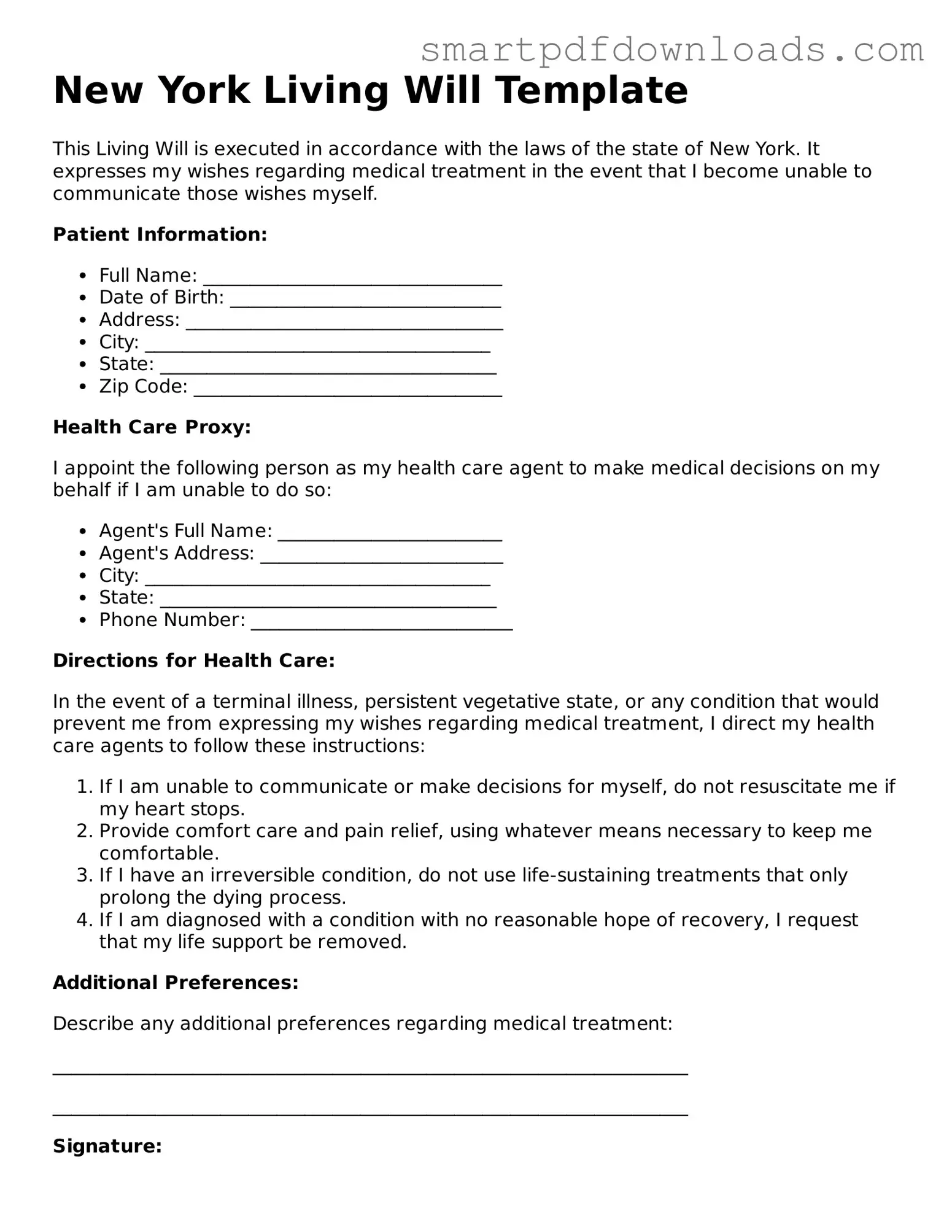New York Living Will Template
This Living Will is executed in accordance with the laws of the state of New York. It expresses my wishes regarding medical treatment in the event that I become unable to communicate those wishes myself.
Patient Information:
- Full Name: ________________________________
- Date of Birth: _____________________________
- Address: __________________________________
- City: _____________________________________
- State: ____________________________________
- Zip Code: _________________________________
Health Care Proxy:
I appoint the following person as my health care agent to make medical decisions on my behalf if I am unable to do so:
- Agent's Full Name: ________________________
- Agent's Address: __________________________
- City: _____________________________________
- State: ____________________________________
- Phone Number: ____________________________
Directions for Health Care:
In the event of a terminal illness, persistent vegetative state, or any condition that would prevent me from expressing my wishes regarding medical treatment, I direct my health care agents to follow these instructions:
- If I am unable to communicate or make decisions for myself, do not resuscitate me if my heart stops.
- Provide comfort care and pain relief, using whatever means necessary to keep me comfortable.
- If I have an irreversible condition, do not use life-sustaining treatments that only prolong the dying process.
- If I am diagnosed with a condition with no reasonable hope of recovery, I request that my life support be removed.
Additional Preferences:
Describe any additional preferences regarding medical treatment:
____________________________________________________________________
____________________________________________________________________
Signature:
I, ________________________________, declare this document serves as my Living Will, created on this _____ day of ______________, 20____.
___________________________
Signature of Patient
Witnesses:
Witness 1: ____________________________ Signature: ________________________
Witness 2: ____________________________ Signature: ________________________
This Living Will must be signed in the presence of two witnesses or a notary public to be legally binding.
